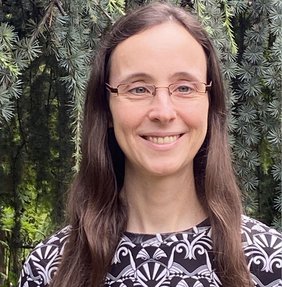The German W 2 position is comparable to that of an associated professor. The selected scientists are appointed by the president of the Max Planck Society subject to the recommendations from a rigorous external review of nominated candidates. “Dr Hohenegger is an outstanding scientist, mentor, department member, and person, and I am very pleased to see her contributions recognized by a W 2 position at our institute”, says Prof. Bjorn Stevens, director and leader of the department “The Atmosphere in the Earth System” at MPI-M.
Dr. Hohenegger studied and received her PhD at ETH Zürich. She was then a postdoc funded by the Swiss National Science Foundation at the University of Washington, USA, before moving to MPI-M in 2010. She has headed her own research group “Precipitating Convection” since 2011 and is also a team leader in the Hans-Ertel-Centre for Weather Research since 2011. Dr. Hohenegger was awarded her Habilitation (the highest qualification level in the German university system) in June 2021. Every career step leading to the W2 position required evidence of progressive scientific accomplishments.
Dr Hohenegger’s international reputation stems from her studies of precipitating convection, its interactions with the environment and its representation in atmospheric models across resolution. One question that particularly interests her is the role that the surface, being the ocean or the land, plays in setting basic features of the climatological precipitation distribution: Do the properties of the surface conspire with convection to keep precipitation to the precipitating region? How strong is this coupling? To address these questions, it is of crucial importance to be able to represent convection explicitly and the surface dynamically in climate models. This is the reason why she is taking a leading role at MPI-M in the use and further development of coupled storm-resolving Earth System Models, models which use a grid spacing of a few kilometers.
Additionally, Dr. Hohenegger likes using more simple, idealized approaches to study problems of climate related to the coupling between convection and the underlying surface. Recently, she has also been involved in the design and execution of field campaigns, such as FESSTVaL in Germany, with the aim to sample the near-surface air properties at kilometer-scale resolution.
Further information:
Information about the group “Precipitation Convection” and its research
Project website of the field campaign FESSTVaL
Website Hans-Ertel-Centre (HErZ)
Contact:
Dr. Cathy Hohenegger
Max Planck Institute for Meteorology
Email: cathy.hohenegger@mpimet.mpg.de

